Related Research Articles
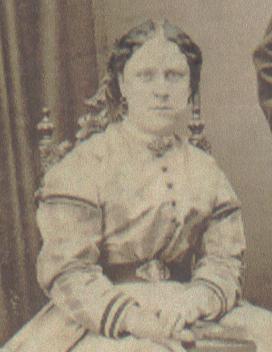
Annie Chapman was the second canonical victim of the notorious unidentified serial killer Jack the Ripper, who killed and mutilated a minimum of five women in the Whitechapel and Spitalfields districts of London from late August to early November 1888.

Mary Ann Nichols, known as Polly Nichols, was the first canonical victim of the unidentified serial killer known as Jack the Ripper, who is believed to have murdered and mutilated at least five women in and around the Whitechapel district of London from late August to early November 1888.

The Whitehall Mystery is an unsolved murder that took place in London in 1888. The dismembered remains of a woman were discovered at three sites in the centre of the city, including the construction site of New Scotland Yard, the new police headquarters. The incident belongs to the so-called Thames Torso Murders.

Emma Elizabeth Smith was a murder victim of mysterious origins in late-19th century London. Her killing was the first of the Whitechapel murders, and it is possible she was a victim of the serial killer known as Jack the Ripper, though this is considered unlikely by most modern authors.

A series of murders that took place in the East End of London from August to November 1888 was blamed on an unidentified assailant who was nicknamed Jack the Ripper. Since then, the identity of the killer has been widely debated, with over 100 suspects named. Though many theories have been advanced, experts find none widely persuasive, and some are hardly taken seriously at all.
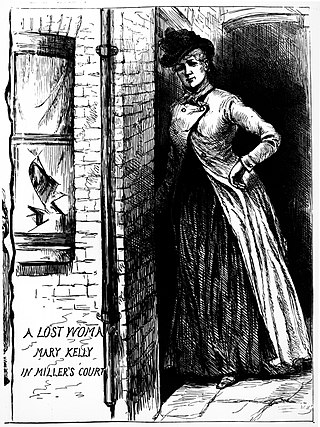
Mary Jane Kelly, also known as Marie Jeanette Kelly, Fair Emma, Ginger, Dark Mary and Black Mary, is widely believed by scholars to have been the final victim of the notorious unidentified serial killer Jack the Ripper, who murdered at least five women in the Whitechapel and Spitalfields districts of London from late August to early November 1888. At the time of Kelly's death, she was approximately 25 years old, working as a prostitute and living in relative poverty.
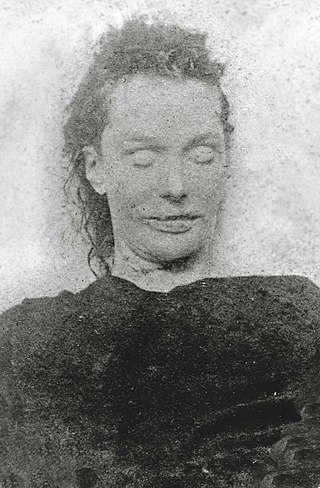
Elizabeth "Long Liz" Stride is believed to have been the third victim of the unidentified serial killer known as Jack the Ripper, who killed and mutilated at least five women in the Whitechapel and Spitalfields districts of London from late August to early November 1888.

Catherine Eddowes was the fourth of the canonical five victims of the notorious unidentified serial killer known as Jack the Ripper, who is believed to have killed and mutilated a minimum of five women in the Whitechapel and Spitalfields districts of London from late August to early November 1888.
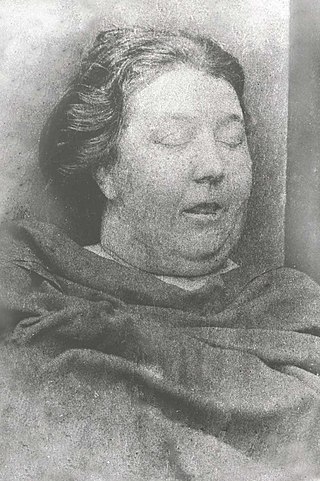
Martha Tabram was an English woman killed in a spate of violent murders in and around the Whitechapel district of East London between 1888 and 1891. She may have been the first victim of the unidentified serial killer Jack the Ripper.
Aaron Kosminski was a Polish barber, hairdresser, and suspect in the Jack the Ripper case.

Montague John Druitt was an English barrister and educator who is known for being a suspect in the Jack the Ripper murders of 1888.

Jack the Ripper was an unidentified serial killer active in and around the impoverished Whitechapel district of London, England, in 1888. In both criminal case files and the contemporaneous journalistic accounts, the killer was also called the Whitechapel Murderer and Leather Apron.

The Whitechapel murders were committed in or near the impoverished Whitechapel district in the East End of London between 3 April 1888 and 13 February 1891. At various points some or all of these eleven unsolved murders of women have been ascribed to the notorious unidentified serial killer known as Jack the Ripper.
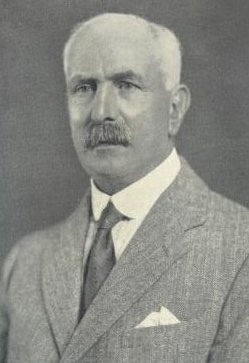
Detective Chief Inspector Walter Dew was a British Metropolitan Police officer who was involved in the hunt for both Jack the Ripper and Dr Crippen.
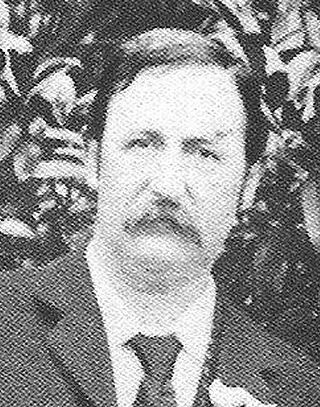
Chief Inspector Donald Sutherland Swanson was a senior police officer in the Metropolitan Police in London during the notorious Jack the Ripper murders of 1888.
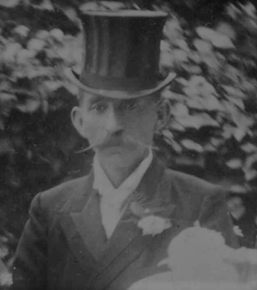
Joseph Lawende was a Polish-born British cigarette salesman who is believed to have witnessed serial killer Jack the Ripper in the company of his fourth victim, Catherine Eddowes, approximately nine minutes before the discovery of her body on 30 September 1888.
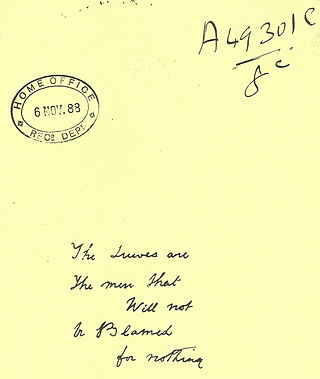
The Goulston Street graffito was a sentence written on a wall beside a clue in the 1888 Whitechapel murders investigation. It has been transcribed as variations on the sentence "The Juwes are the men that will not be blamed for nothing". The meaning of the graffito, and its possible connection to the crimes attributed to Jack the Ripper, have been debated for over a century.
Walter Simon Andrews was a British policeman. He was one of three inspectors who were sent from Scotland Yard to Whitechapel in 1888 to strengthen the investigation of the Whitechapel murders.
The Thames Torso Murders, often called the Thames Mysteries or the Embankment Murders, were a sequence of unsolved murders of women occurring in London, England from 1887 to 1889. The series included four incidents which were filed as belonging to the same series. None of the cases were solved, and only one of the four victims was identified. In addition, other murders of a similar kind, taking place between 1873 and 1902, have also been associated with the same murder series.
James Thomas Sadler, also named Saddler in some sources, was an English merchant sailor who worked as both a machinist and stoker. In 1891, the then-53-year-old was accused of killing prostitute Frances Coles. Sadler was placed under arrest, and a mob almost lynched him at the exit of a police station. Eventually, he was dismissed by police for having a solid alibi, and obtained compensation from a newspaper that had branded him as Jack the Ripper.
References
- ↑ IMDb
- ↑ "Mademoiselle".
- ↑ "Romeo and Juliet".
- ↑ "The Slipper and the Rose".
- ↑ "Jesus of Nazareth (Do Not Use)".
- ↑ "Movies". Movies & TV Dept. The New York Times . 2014. Archived from the original on 27 October 2014.
- ↑ http://www.tcm.com/tcmdb/person/178820%7C93208/Keith-Skinner/filmography.html [ bare URL ]
- ↑ "Television". The New York Times.
- ↑ "Television". The New York Times.
- ↑ http://www.tcm.com/tcmdb/person/178820%7C93208/Keith-Skinner/filmography.html [ bare URL ]